Ranger Round-Up: An Event-full Few Weeks!
It’s bonkers to think that we are already so far into our season as assistant rangers here at Loch of the Lowes. So much has happened, and yet it feels like yesterday (physically as well as figuratively) that we were lopping lupin and scrambling up Schiehallion. So what have we been up to recently?
Well, we presented our first Beaver Watch talk of the season. All of the knowledge we’d accumulated over the past month about beaver biology, ecology, their history and current roles in maintaining waterways in Scotland were finally put to good use. Everything in the presentation went swimmingly—including the European beaver (Castor fiber), which guests and lookouts in the hides were lucky enough to spot diving down near the canal as if by cue as soon as our talk ended. It turns out they’re natural performers in front of an audience! We were feeling a bit upstaged.
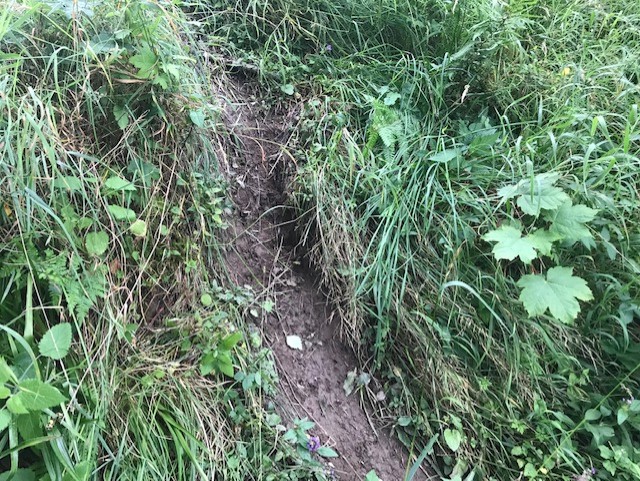
Lowes isn’t the only place we’ve been seeing signs of beavers, though. Across Perthshire, we’ve noticed the distinctive pencil-shaped tree stumps left behind after trees are gnawed and felled, as well as their variety of lodges and damns constructed across waterways that are so pivotal in creating the dynamic wetland ecosystems we see in the surrounding area. We have even stumbled across several of their canals and slides, which they use to move easily and safely between their different foraging grounds.
Beavers aren’t the only large mammal we’ve found evidence of either. Deep in the woods, we’ve discovered badger setts scuffed with fresh dirt and dotted with the little paw prints and snuffle holes that typically mark breeding badger setts. Exciting stuff! With any luck, we might even catch a sighting of one before the season is over.
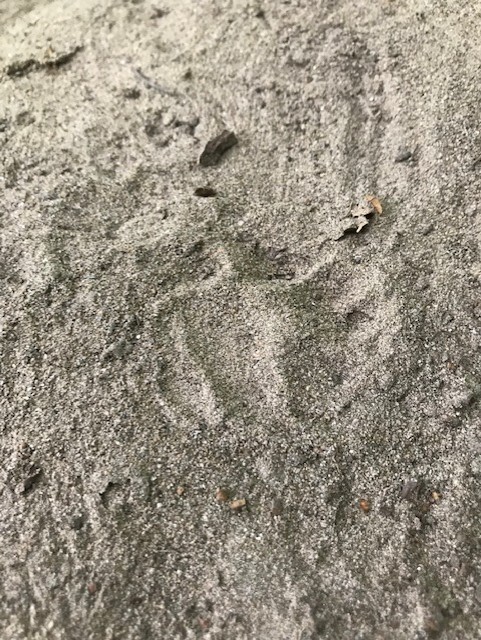
Something that we hopefully won’t be seeing much of again is Himalayan balsam on the Trust’s Tummel Shingle Islands Reserve. With the help of some eager volunteers (summoned by whisperings of cake, courtesy of Chef Charlotte), we were able to pull through the main seed source on the land bordering the reserve before the plants could catapult their seeds into the waterways.
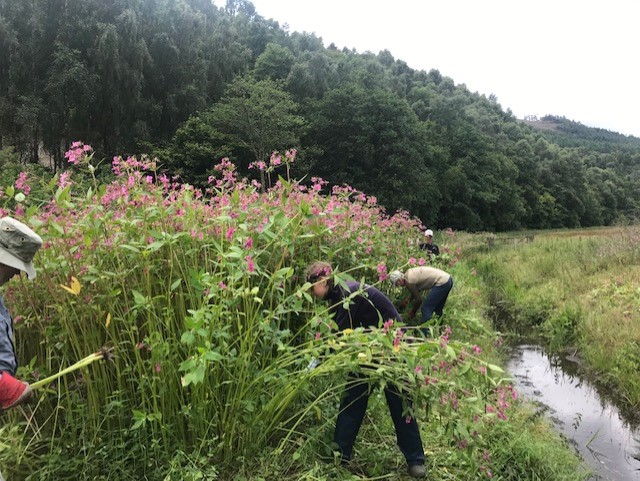
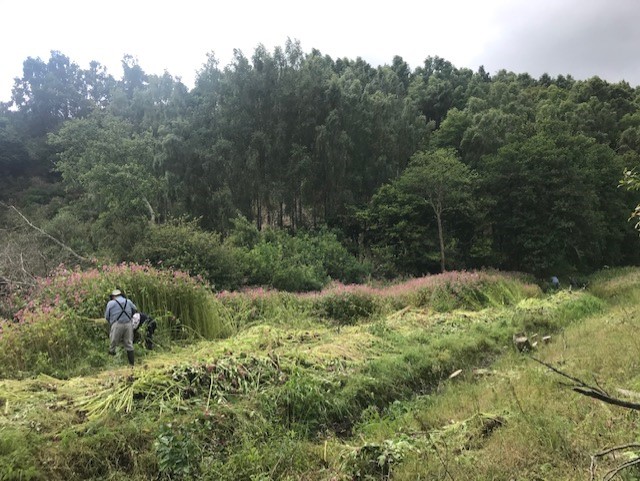
Also on the reserve, we held a public wildflower event led by botanist and field-guide author Faith Anstey, who fascinated us with her extensive knowledge of all things green and flowery.
It is easy to feel out of your depth when up to the waist in so many plant species that it seems like you might drown in them, but Faith delved in fearlessly and demonstrated how to identify the individuals amongst the masses; the gorgeous lilac Field Scabius (Knautia arvensis) and the lush Red Clover (Trifolium pratense), the Common Rock-Roses (Helianthemum nummularium) and Bird’s-Foot-Trefoil (Lotus corniculatus) that crept low in glowing yelps of yellow.
She taught us how to search for basic features and how to use that information to find the family name, then the genus and the specific species. We felt like plant detectives as we snorkeled through the grasses with our hand lenses and notepads, though we barely moved a few meters. There was so much to see right under our feet that we could have spent all day in a single spot and still wouldn’t have identified everything!
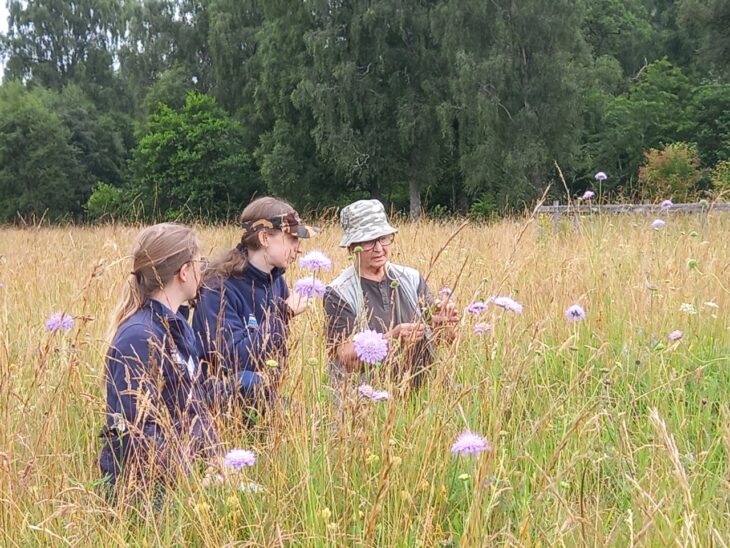
Between all those fun and games, we also dug down and did some hard graft. At Balgavies Loch Reserve, we have been tackling the arduous task of path maintenance under the wing of Duncan Budge, North-East Reserves Project Officer and woodwork extraordinaire.
With hammer and nails to hand, we’ve been ferrying fence materials along the snaking footpaths to replace the old wooden borders with strong new timber, whilst Duncan teaches us the tools of the trade and the ospreys grace us with the occasional flyover.
The family are faring fantastically after the kerfuffle of a few weeks ago regarding the unfledged chick, which you can read about in detail in the feature blog. Both chick and parents have taken well to the temporary nest; the parents have begun building atop it with nesting material, and we were delighted to watch the juvenile plucking at a fish as it rested safely in its safe new home.
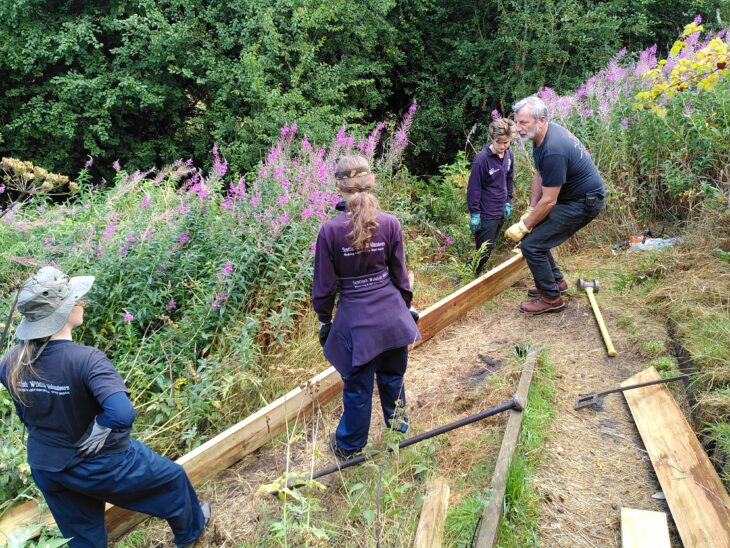 Duncan showing the Assistant Ranger Team how to repair path borders at Balgavies Loch reserve © Sara ‘Raz’ Rasmussen
Duncan showing the Assistant Ranger Team how to repair path borders at Balgavies Loch reserve © Sara ‘Raz’ Rasmussen
Keep an eye on our blogs for more rangering antics. For those of you interested, our beaver talks will be running weekly until the end of August so make sure to grab a ticket. We look forward to seeing you there!
Assistant Ranger Team
Help protect Scotland’s wildlife
Our work to save Scotland’s wildlife is made possible thanks to the generosity of our members and supporters.
Join today from just £3 a month to help protect the species you love.
Preface
It’s bonkers to think that we are already so far into our season as assistant rangers here at Loch of the Lowes. So much has happened, and yet it feels …
